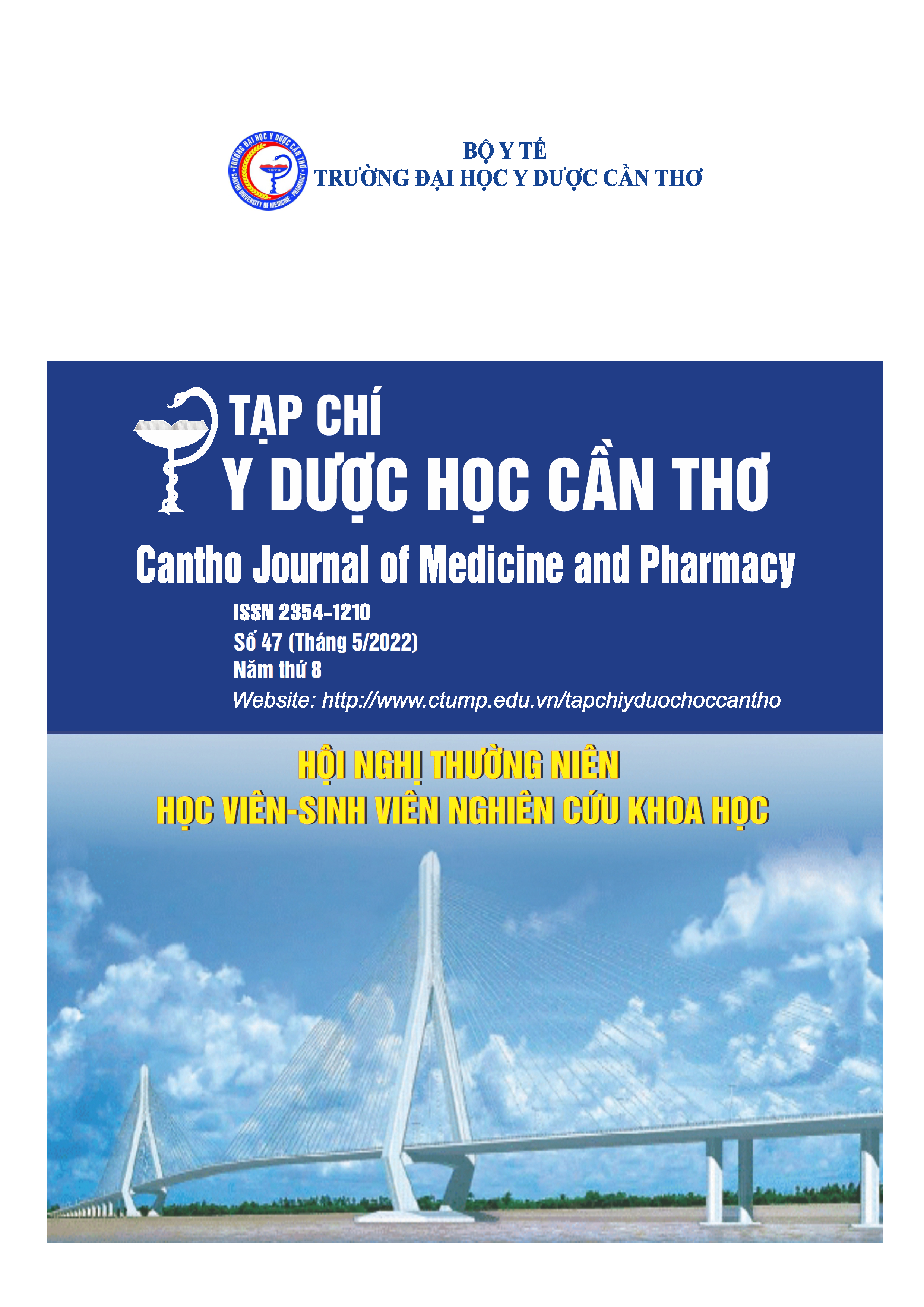Study on clinical characteristics and outcome evaluation of cross finger flap in soft tissue defect of finger at Can Tho Central General Hospital
Main Article Content
Abstract
Background: Fingers and hand are important parts of human body and soft tissue defect of fingers are the most common form of hand injuries. There are various techniques used for reconstruction of finger defect but cross finger flap is effective and very simple procedure without significant complication or require special techniques. Objectives: To examine characteristics of clinical and to evaluate the outcomes of cross finger flap for reconstruction of soft tissue defect of fingers. Materials and methods: 22 patients who had soft tissue defect of fingers who had undergone the cross finger flap cover. We noted mechanism of injury, size of defect, size of the flap, type of cross finger flap was used. Outcome measures recorded were flap viability, flap sensibility using two -point discrimination (TPD), total active motion of fingers (TAM) and patient satisfaction.
Results: Among 22 patients treated with cross finger flap, there were 18 men and 4 women with the average age 38.6±11.4. The most common mode of injury was industrial accident (59.1%). The mean size of the defect was 205.5±86.6mm2 (range: 110mm2-500mm2). The average TPD test measured was 7.6±1.5mm. Full range of motion was obtained in 81.8% of patients. The functional and aesthetic results were satisfactory in 95.5% patients. Conclusion: The cross finger flap is safe and effective method for reconstruction of soft tissue defect of finger. This procedure is simple to perform under local anesthesia and is able to provide both mechanical stability & sensory recovery.
Article Details
Keywords
Soft tissue defect of fingers, cross finger flap, two point discrimination (TPD), total active motion of finger (TAM)
References
2. Phan Dzư Lê Thắng(2014), Kết quả điều trị vết thương mất da mặt lưng ngón tay bằng vạt cân mỡ ngược dòng, Luận án chuyên khoa II, Đại học Y Dược TP.Hồ Chí Minh.
3. Ahmed M. M, & Rao A. L (2017), Review of cross-finger flaps–indications and modifications,
International Journal of Science and Research, 2299-2303.
4. Al-Qattan M. M (2018), Time of return back to work and complications following cross-finger flaps in industrial workers: Comparison between immediate post operative mobilization versus immobilization until flap division, International journal of surgery case reports, 42, 70-74.
5. Karthikeyan G, Gopi Renganathan, R Subashini (2017), Versatility and Modifications of the Cross- finger Flap in Hand Reconstruction, International Journal of Scientific Study, Vol 5, Issue 6, 35-46.
6. Martin-Playa P & Foo A (2019), Approach to Fingertip Injuries, Clinics in plastic surgery, 46(3), 275-283.
7. Mutaf M (1993), A new design of the cross finger flap: the C ring flap, British journal of plastic surgery, 97 -104.
8. Nitesh KG A. B (2016), Cross Finger Flap for Reconstruction of Various Finger Defect, IOSR
Journal of Dental and Medical Sciences, 15(4), 70-73.
9. Rabarin F. et al. (2016), Cross-finger flap for reconstruction of fingertip amputations: long-term
results, Orthopaedics & Traumatology: Surgery & Research, 225-228.
10. Rajappa S. & Prashanth T (2017), Cross finger flap cover for fingertip injuries, Int J Res Orthop, 164-167.


